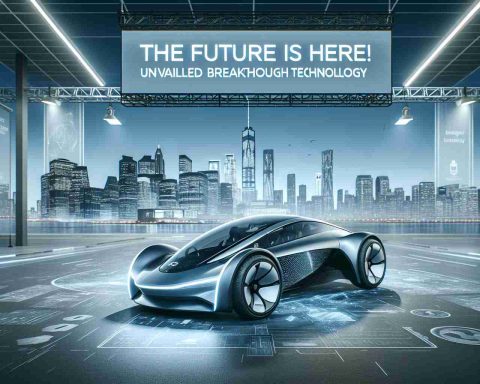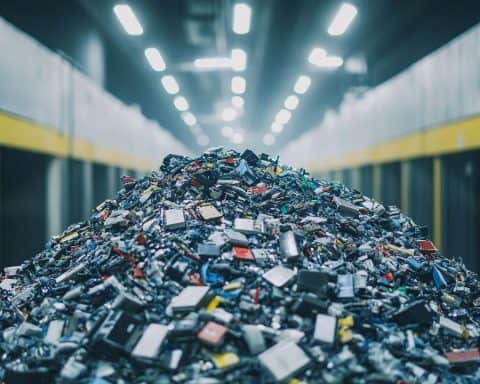As electric vehicles (EVs) gain ground in the automotive world, Tesla keeps capturing attention with breakthroughs that promise to reshape the horizon. The recent excitement revolves around Tesla’s 4680 battery cell, first unveiled in the 2020 Battery Day event. While not a solid-state battery, the 4680 offers fascinating advancements that compel us to rethink the current standing of lithium-ion technology.
The Basics: Not Solid-State, But Supercharged Lithium-Ion Innovation
Tesla’s latest battery innovation, the 4680, stands apart with its liquid electrolyte-based cylindrical cell design. Measuring precisely 46 mm by 80 mm—a physical cue from which it draws its name—the battery showcases remarkable features. Despite its non-solid-state nature, this innovation promises increased energy density. When incorporated into Tesla’s vehicles, these batteries could deliver impressive driving ranges, exceeding 500 miles on a single charge.
A Leap in Manufacturing: Unique Design, Major Implications
Tesla raises the bar yet again by introducing a tabless design, an inventive manufacturing technique that minimizes internal resistance and enhances efficiency. This simplification of the production process not only boosts battery performance but also strategically reduces costs—an essential factor as more consumers eye affordable EV options.
The Future of EV Batteries: Awaiting the Solid-State Revolution
In the backdrop of Tesla’s achievements with the 4680, it’s crucial to note that the anticipated solid-state batteries are not yet commercially viable. With many companies working on solid-state technology, Tesla’s current focus on optimizing existing models signifies that the path to widespread solid-state battery adoption is still in the making. Yet, Tesla’s endeavors with the 4680 battery underscore the potential of refining lithium-ion technology for broader applications in our electric future.
How Tesla’s 4680 Battery Redefines Safety Standards in the EV Market
As Tesla’s 4680 battery continues to make waves, one aspect often overshadowed by its impressive range is the impact on safety standards in electric vehicles. What makes this cylindrical cell unique in its safety profile? Unlike other lithium-ion batteries, the 4680’s innovative design mitigates overheating and reduces risks of combustion, a concern that has historically plagued EV technologies.
Could this redefine insurance costs for EV owners? Potentially. With decreased risks of battery failure or fires, insurers may lower premiums for Tesla’s EV owners, offering financial relief to consumers and potentially increasing EV market uptake.
Intriguing Environmental Impact: Tesla’s approach to manufacturing the 4680 battery involves fewer materials and a reduced carbon footprint. In a world increasingly oriented toward sustainability, this aspect could influence how governments across the globe craft regulations for EV incentives.
Global Economic Implications are notable as well. As more manufacturers aim to replicate or compete with Tesla’s battery innovations, countries might pivot toward enhancing their local battery production capabilities, which could reshape global manufacturing landscapes. For example, does this herald a new era for traditional auto manufacturing hubs? Only time will tell.
While debates continue on when solid-state batteries will replace lithium-ion tech, Tesla’s enhancements signify a transition period where current technologies evolve rather than become obsolete overnight. The real question remains, how soon will these advancements consolidate into mainstream automotive manufacturing? As Tesla shows, the evolution of battery tech holds profound implications for the world beyond just extended driving ranges.
The article has been updated: 2024-11-03 22:26
Here are some suggested related links for the post title “Is Tesla’s 4680 Battery the Game-Changer EV Enthusiasts Have Been Waiting For?”:
1. Tesla Official Site – Explore Tesla’s innovations, including their latest technologies and advancements in battery development.
2. Electrek – Stay updated with the latest news and analysis on electric vehicles and Tesla’s rolling innovations, including in-depth discussions on the 4680 battery.
3. Car and Driver – Get expert reviews and articles covering a range of vehicles, including an in-depth look at Tesla’s technology and electric vehicles.
4. The Verge – Find articles and news about technology, including advancements in electric vehicles and Tesla’s impact on the automotive industry.
5. Autoweek – Discover updates and features on the automotive world, with a focus on electric vehicles and Tesla’s innovations.
6. Reuters – Read the latest business news, including insights into Tesla’s market strategies and battery technology advancements.
7. Forbes – Explore in-depth articles and expert opinions regarding Tesla, electric vehicles, and the significance of the 4680 battery technology.
8. Bloomberg – Access financial and market news, including analysis on how Tesla’s battery technology could reshape the EV landscape.
The article has been updated: 2024-11-08 08:06
Is Tesla’s 4680 Battery the Game-Changer EV Enthusiasts Have Been Waiting For?
The Tesla 4680 battery has garnered significant attention for its potential to revolutionize electric vehicles (EVs). With its larger cell format, the 4680 is designed to improve energy density, reduce costs, and streamline production processes. Analysts believe that if successful, this battery could significantly enhance the range and performance of Tesla’s vehicles, making them more appealing to a broader consumer base. Additionally, the innovative design may lead to improvements in manufacturing efficiency, contributing to lower prices and higher availability of EVs in the market. Therefore, many EV enthusiasts are optimistic that Tesla’s 4680 battery might indeed be the breakthrough needed to accelerate the adoption of electric vehicles.

















